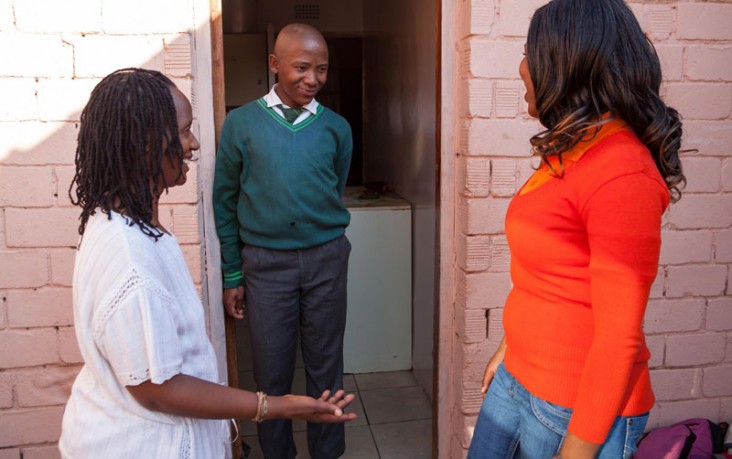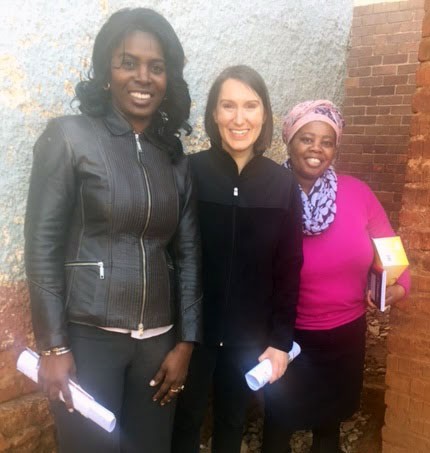- What We Do
- Agriculture and Food Security
- Democracy, Human Rights and Governance
- Economic Growth and Trade
- Education
- Ending Extreme Poverty
- Environment and Global Climate Change
- Gender Equality and Women's Empowerment
- Global Health
- Water and Sanitation
- Working in Crises and Conflict
- U.S. Global Development Lab


Allison M. McFall, MHS, is the former HIV/AIDS Implementation Science Data Research Intern and currently a PhD candidate in Epidemiology at Johns Hopkins Bloomberg School of Public health, focusing her research on optimizing HIV prevention, care and treatment for vulnerable populations in low-resource settings.

Delivette Castor, PhD, is a Research Advisor in the research division in USAID's Office of HIV/AIDS (OHA). Deli co-leads USAID/OHA pre-exposure prophylaxis (PrEP) task force, manages and provides technical assistance on several projects relative to novel PrEP approaches and roll out of PrEP.
Recent Blog Posts
- Highlights from IAS – How Optimized Antiretrovirals like Dolutegravir are Accelerating Access to Improved HIV Treatment
Talia Dweck - July 24, 2017 - 'But what if it falls out?' Using Human-Centered Design to Answer Questions about the Dapivirine Ring
Elizabeth Russell and Emily Harris - July 11, 2017
In July 2017, we had the wonderful opportunity to travel to Lesotho and South Africa to support ongoing work within the U.S. Agency for International Development (USAID) Office of HIV/AIDS implementation science and microbicide research portfolios on oral and topical pre-exposure prophylaxis (PrEP). Following several clinical trials in different subpopulations, the World Health Organization (WHO) recommended PrEP for anyone at substantial risk of HIV infection, including key populations (e.g., female sex workers, men who have sex with men). While substantial risk is notionally a setting where the HIV annual incidence rate is 3 percent, identifying such places and people of "substantial risk" has been a challenge. Mathematical models can help countries beginning to roll out PrEP answer difficult questions such as: which populations to target; the potential impact of a PrEP program on HIV incidence in the context of current HIV prevention and treatment programs; and the cost of scaling up PrEP for maximal benefit.
Lesotho is the second of four countries where mathematical modeling work to support PrEP implementation has been initiated; the other countries are Mozambique, Lesotho, Uganda and Malawi. The Hillbrow community in Johannesburg, South Africa, has been one of the HIV epicenters and serves as the site for several studies within the Microbicides Product Introduction Initiative (MPii).
Advancing PrEP Policy and Implementation in Lesotho
As a part of USAID's Health Policy Plus (HP+) and Project SOAR, Avenir Health is using mathematical models to help countries understand the potential impact and cost-effectiveness of introducing and scaling up PrEP as part of the armamentarium for epidemic control.
Lesotho, a small country surrounded by South Africa, is a high-burden setting where nearly 1 in 4 adults 15–49 years old are infected with HIV. The U.S. President's Emergency Plan for AIDS Relief (PEPFAR) and USAID have supported a full range of prevention programs in Lesotho such as voluntary medical male circumcision (VMMC); prevention of mother-to-child transmission (PMTCT) of HIV services; condom promotion and distribution; the Test and Start policy (i.e., immediately initiating HIV treatment for all those diagnosed with HIV); and the DREAMS Initiative. HIV incidence has declined over the past decade, but there is still work to be done to achieve epidemic control, and expanding PrEP is one potential tool. Lesotho's national guidelines now recommend PrEP for HIV-negative individuals who are at significant risk of HIV acquisition. The country has an ambitious target of reaching nearly 24,000 individuals with PrEP, including adolescent girls and young women, sero-discordant couples, female sex workers, and men who have sex with men in the coming year across several districts. Modeling work will provide the country with technical assistance during this critical startup period.

In Lesotho's capital city, Maseru, we participated in vibrant consultations with stakeholders to determine specific questions that can be answered with mathematical models that the country would like addressed in planning and implementing PrEP. The very preliminary modeling analyses showing high estimated HIV incidence throughout Lesotho and all sex categories sparked discussions about whether geographic prioritization was relevant, importance of age in further characterizing priority groups and how rollout would occur across the country. The Lesotho Ministry of Health's Director of Disease Control and Director of Lab Services led a large meeting involving all stakeholders such as the U.S. Centers for Disease Control and Prevention (CDC) and USAID, Lesotho representatives, implementing partners that will be delivering PrEP services in-country, including Jhpiego, and the Elizabeth Glaser Pediatric AIDS Foundation (EGPAF). Representatives from these various stakeholder groups will continue to consult with the Avenir Health team and USAID/Washington in clarifying these priority questions and identifying priority data to support Lesotho in optimizing this analysis for the country's goals. Lesotho has a strong commitment to expanding PrEP as a part of its efforts to achieve epidemic control, and this modeling exercise will provide a strong evidence base for how to move forward effectively and efficiently.
Characterizing Male engagement for PrEP Use and Adherence in South African Women
Although HIV rates have remained consistently high, the demography of the Hillbrow community has changed over recent years. Hillbrow currently has a large migrant population, high levels of drug and alcohol use and other socioeconomic challenges. One of the MPii projects, CHARISMA (Community Health Agency in Relationships and Safer Microbicide Adherence), is looking at the influence of male engagement and partner violence on initiation and sustained use of PrEP with the help of community action teams (CAT). CAT members are community members with a strong commitment to HIV prevention and have exceptional knowledge of HIV prevention, including PrEP. We conducted a field visit with the CATs working in Hillbrow. To observe their interaction with the community embodied the notion of community engagement and embodied the acronym of the project, CHARISMA! Like the modeling work in Lesotho, the site visit with the CATS reignited our commitment to bringing HIV prevention technologies from concepts and innovations to real options for members of communities like Hillbrow.







Add new comment